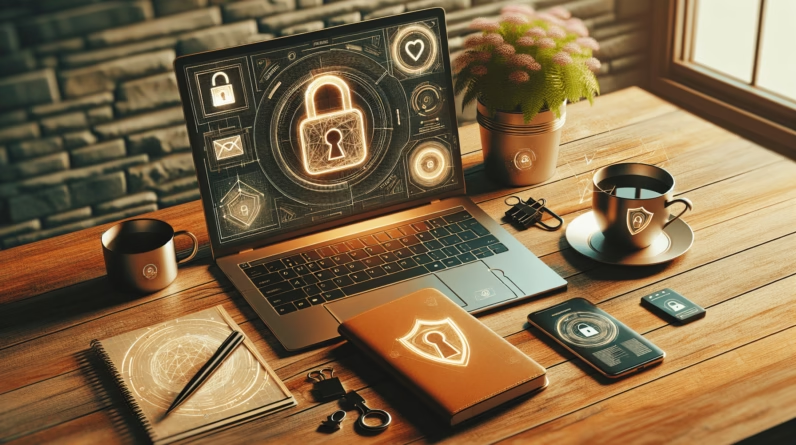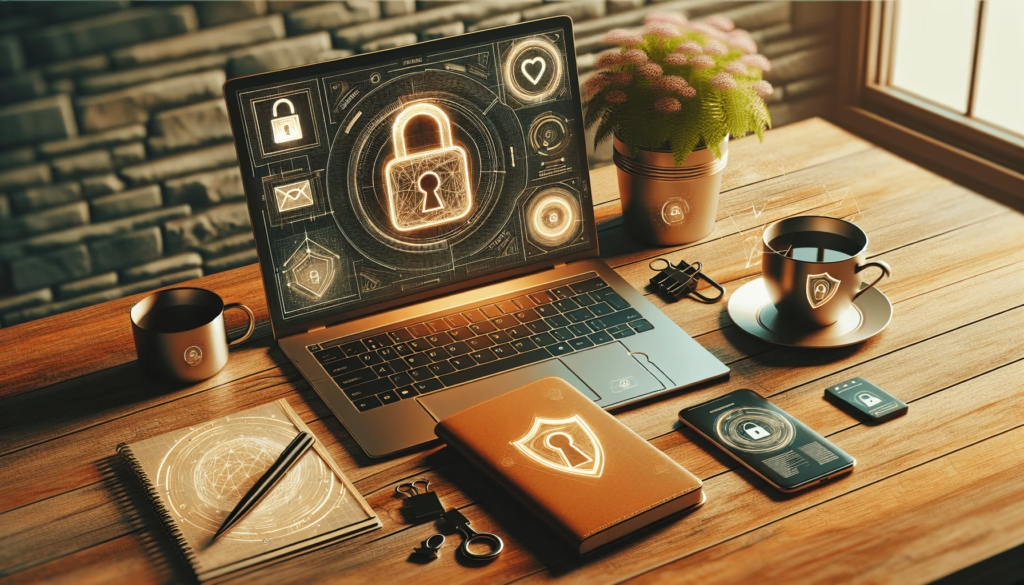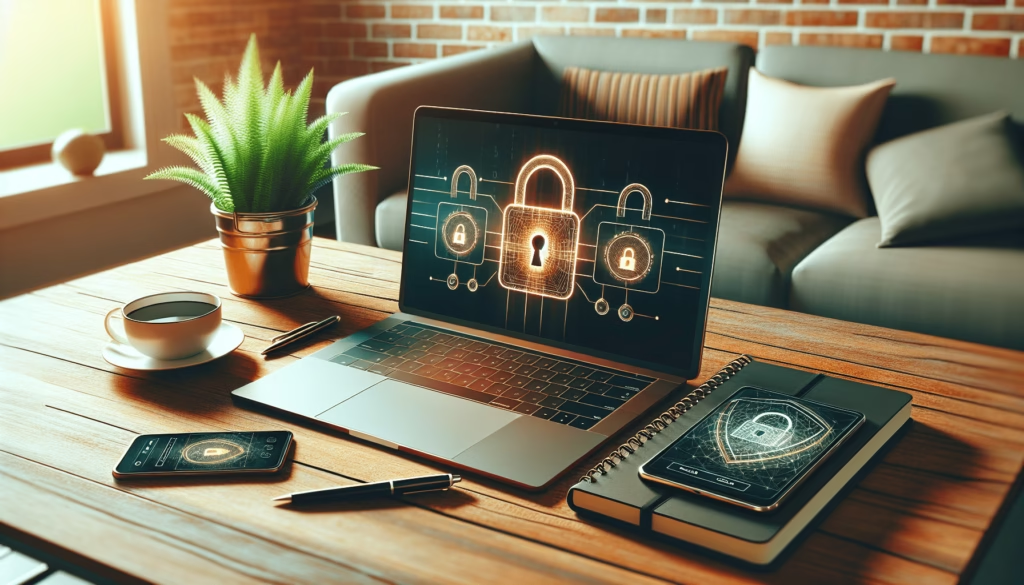
Have you ever thought about how secure your data is while you’re enjoying the comfort of your home office? In today’s world, where remote work is more common than ever, it’s vital to consider how to protect your information.

Learn More About Cybersecurity Strategies
Table of Contents
Understanding Cybersecurity for Remote Workers
When you’re working remotely, the lines between personal and professional life often blur. This situation can expose your data to various threats if you’re not taking proper precautions. Cybersecurity is an essential aspect of any remote job and involves protecting your digital information from cyber threats. By understanding the risks you face while working remotely, you can take steps to safeguard your data effectively.
The Importance of Cybersecurity in Remote Work
The shift to remote work has created a new landscape for cyber threats. Employees are often using personal devices and home networks, which can be less secure than their company’s infrastructure. By understanding the importance of cybersecurity in this context, you can better protect both your information and that of your employer.
- Data Breaches: With more people working from home, data breaches have increased significantly. Cybercriminals often target remote workers because they may not have the same security measures as a corporate environment.
- Phishing Attacks: These malicious tactics continue to evolve, with remote employees being prime targets. Scammers may use more convincing messages since workers are more likely to be isolated and on their devices frequently.
Best Practices for Keeping Your Data Safe
Ensuring your data remains secure while working remotely doesn’t have to be complicated. Here are some essential practices that you can start implementing today.
Use Strong Passwords
Passwords are your first line of defense against unauthorized access. A strong password should be unique and complex, combining letters, numbers, and special characters.
- Password Managers: Consider utilizing a password manager to help you store and generate strong passwords safely. This way, you don’t have to remember every single password, making it easier to maintain security.
Multi-Factor Authentication (MFA)
Adding an extra layer of security is a smart move. Multi-factor authentication requires you to provide two or more verification factors to gain access to your accounts.
- Methods of MFA: Common methods include SMS texts, email confirmations, or authentication apps. Implementing MFA can significantly reduce the risk of your accounts being compromised.
Secure Your Home Network
Your home network may not have the same level of security as your office. Ensuring that your home internet connection is safe is essential for protecting your data.
Change Default Router Settings
Many people overlook the security settings on their routers, leaving them vulnerable to attacks. Make sure to change the default username and password and enable network encryption.
- Wi-Fi Security Protocols: Use WPA3 if your router supports it for maximum security. This is the latest security protocol that provides better protection against password guessing attempts.
Create a Guest Network
If you have visitors using your Wi-Fi or additional devices connected to the internet, set up a guest network. This will keep your work devices separate from those potentially less secure.
- Segmentation: By segmenting your network, you reduce the risk of outsiders accessing your sensitive information.
Protect Your Data While Working From Home
Keep Software Up to Date
Software updates often contain important security fixes that can protect you from vulnerabilities.
Operating System and Application Updates
Make it a habit to install updates promptly for your operating system and applications. These updates often include patches for security vulnerabilities and enhancements.
- Automatic Updates: Enable automatic updates whenever possible to ensure you’re always running the latest software version.
Antivirus and Antimalware
Installing antivirus and antimalware programs can provide an additional layer of security for your devices.
- Regular Scans: Schedule regular scans to identify and fix any threats your system might face.
Be Aware of Phishing Scams
As a remote worker, staying vigilant against phishing attempts is crucial.
Identifying Phishing Attempts
Phishing emails can come in many forms, but they often have certain signs. Be suspicious of emails with poor spelling and grammar, unexpected attachments, or requests for personal information.
- Never Click Unfamiliar Links: Always hover over links to see where they lead before clicking and verify with the sender if you’re uncertain about the request.
Report Phishing Attempts
If you encounter a phishing attempt in your work emails, report it to your IT department immediately. This will help keep others safe and maintain the integrity of your company’s data.
Use a Virtual Private Network (VPN)
Using a VPN is highly recommended for remote workers, especially when connecting to public Wi-Fi networks.
What is a VPN?
A VPN encrypts your internet connection, which makes it difficult for hackers to intercept your data. This is particularly important if you’re using public Wi-Fi.
- Choosing a VPN Provider: Make sure to select a reputable VPN provider that has a good record of safeguarding user privacy and data.

Be Mindful of Remote Access Tools
When working from home, you might use remote access tools to connect to your company’s server.
Use Reliable Software
Ensure that any remote access software you use is from a trusted source. Unverified programs can leave your organization vulnerable.
- VPN and Remote Desktop: If your company uses VPN access, always connect through it before using any remote desktop software. This adds an additional layer of protection.
Maintain Physical Security
While you may focus on digital security, remember that physical security matters when you work from home.
Secure Your Workspace
If possible, set up a dedicated workspace in your home where you can keep your work devices secure. Using a lock for your computer or other sensitive materials can also help.
- Screen Privacy: Using a privacy screen on your devices can prevent unauthorized individuals from viewing your information while you work.
Be Cautious With Shared Spaces
If your home isn’t private, be mindful of those around you when accessing sensitive information. Log out of accounts when not in use and avoid discussing classified company details within earshot of others.
Enhancing Remote Work Security Culture
Creating a culture of security within your remote work environment will not only help protect your data but also empower your colleagues to do the same.
Continuous Education
Taking part in regular cybersecurity training can help you stay updated on the latest threats and best practices. Look for online courses or webinars offered by your employer or reputable organizations.
- Sharing Information: Share tips and tricks with your coworkers to foster a community that prioritizes cybersecurity. Encourage open conversations around cyber threats and how to tackle them effectively.
Develop an Incident Response Plan
If something goes wrong, it’s crucial to have a plan in place.
- Reporting Procedures: Know the procedures for reporting suspicious activity or data breaches within your company. Regularly review and update the plan to keep it relevant.
Backup Your Data
Backing up your data is a preventive measure that protects you in case of unexpected events like hardware failure or data breaches.
Regular Backups
Create a schedule for backing up your data. Use both cloud storage and physical backups to ensure redundancy.
- Automated Backups: Consider utilizing tools that automatically back up your files, making it easier to safeguard your information regularly.
Know Your Recovery Options
Understand how to recover your data and test your backups periodically to ensure they function correctly.
Communicate with Your Employer
Maintaining communication with your employer about security policies while working from home is essential.
Know Company Policies
Familiarize yourself with your company’s cybersecurity policies and ensure you adhere to them. If you notice any gaps or areas for improvement, don’t hesitate to suggest enhancements.
- Request Resources: If you’re unsure about specific security practices or need tools, don’t hesitate to reach out. Many companies offer resources to help remote workers secure their data effectively.
Stay in Touch With IT Support
Keep an open line of communication with your IT department. They can provide assistance with any issues you encounter, offer guidance on best practices, and help mitigate any potential threats.
The Future of Remote Work Security
As remote work continues to evolve, so will the cybersecurity landscape. Keeping up with the latest trends is essential for both you and your employer.
Emerging Threats
Be aware of emerging threats and technology that could affect your remote work strategy. Cybersecurity measures are continually changing, and staying informed will help you adapt.
- Regular Training: Continuous learning, including staying updated on the latest cybersecurity news, will help you navigate these challenges effectively.
Investing in Security Solutions
Encourage your employer to invest in comprehensive security solutions tailored to a remote work environment. This might include advanced threat detection software and enhanced access management tools.
Conclusion
Your data and your employer’s information are under constant threat, especially in the realm of remote work. By implementing the practices outlined above, you can significantly reduce risks and create a secure work environment. Cybersecurity should never be an afterthought; it’s essential for protecting your privacy and the integrity of your workplace. With the right knowledge and tools, you can work confidently from home, knowing that your data is well-protected.







